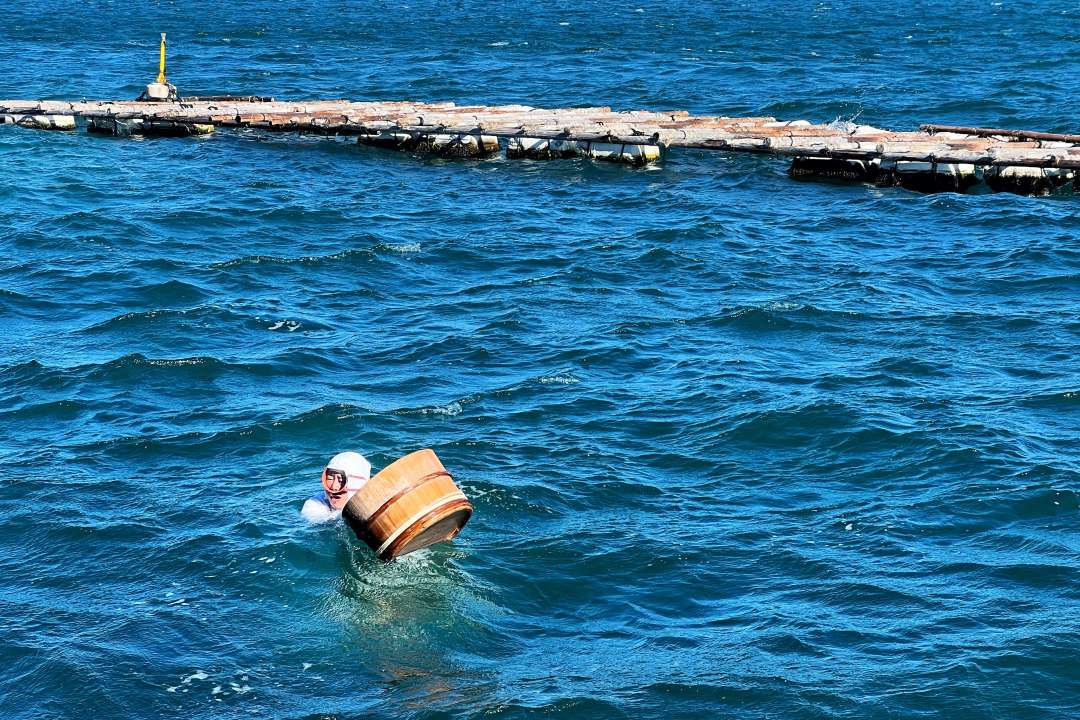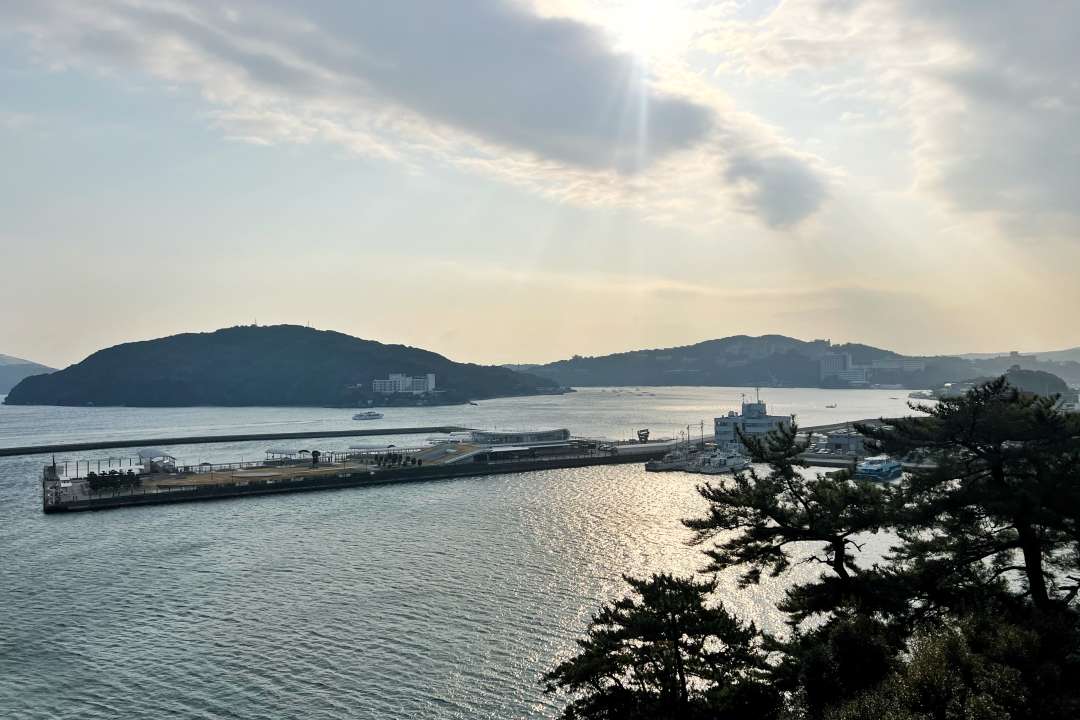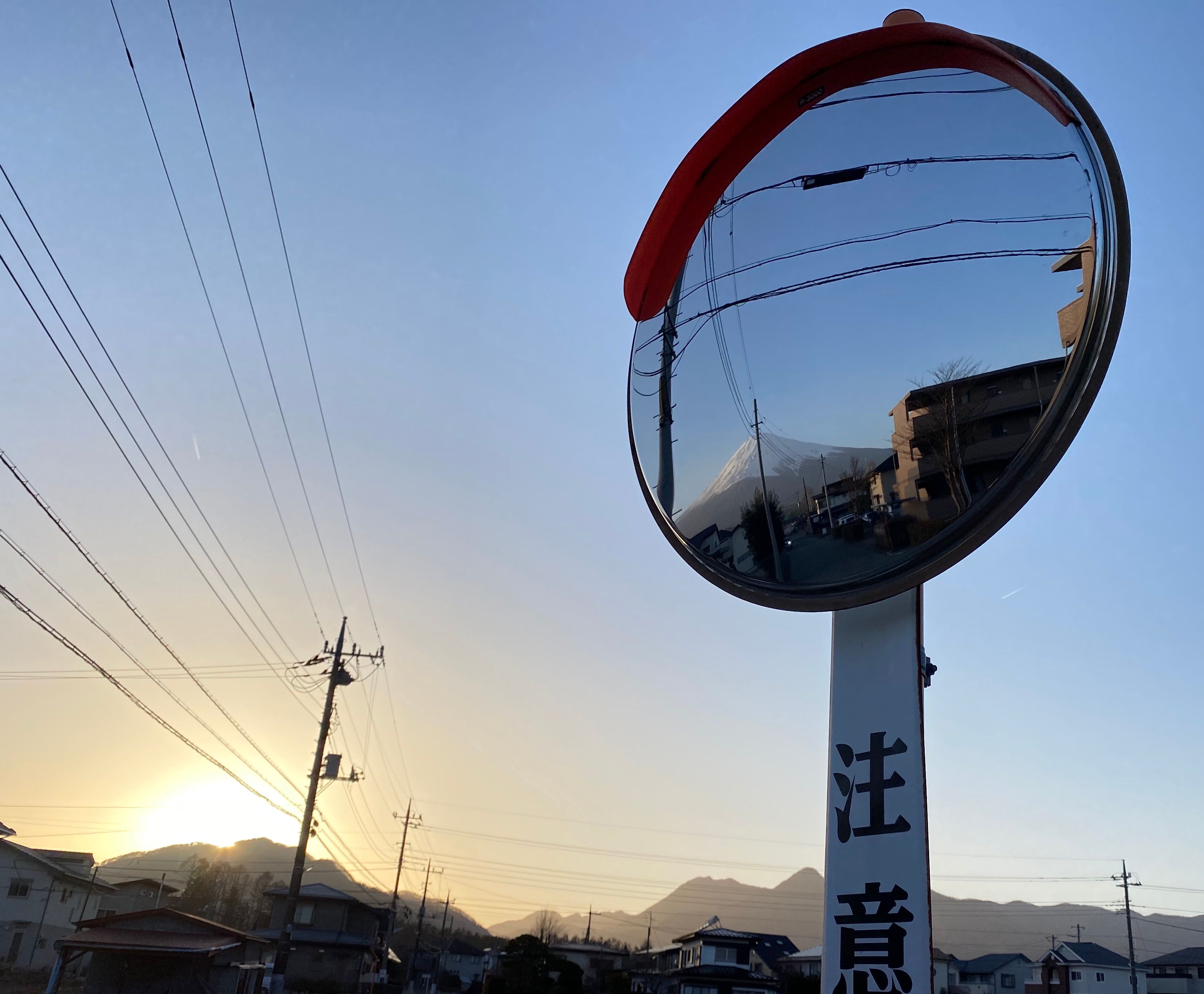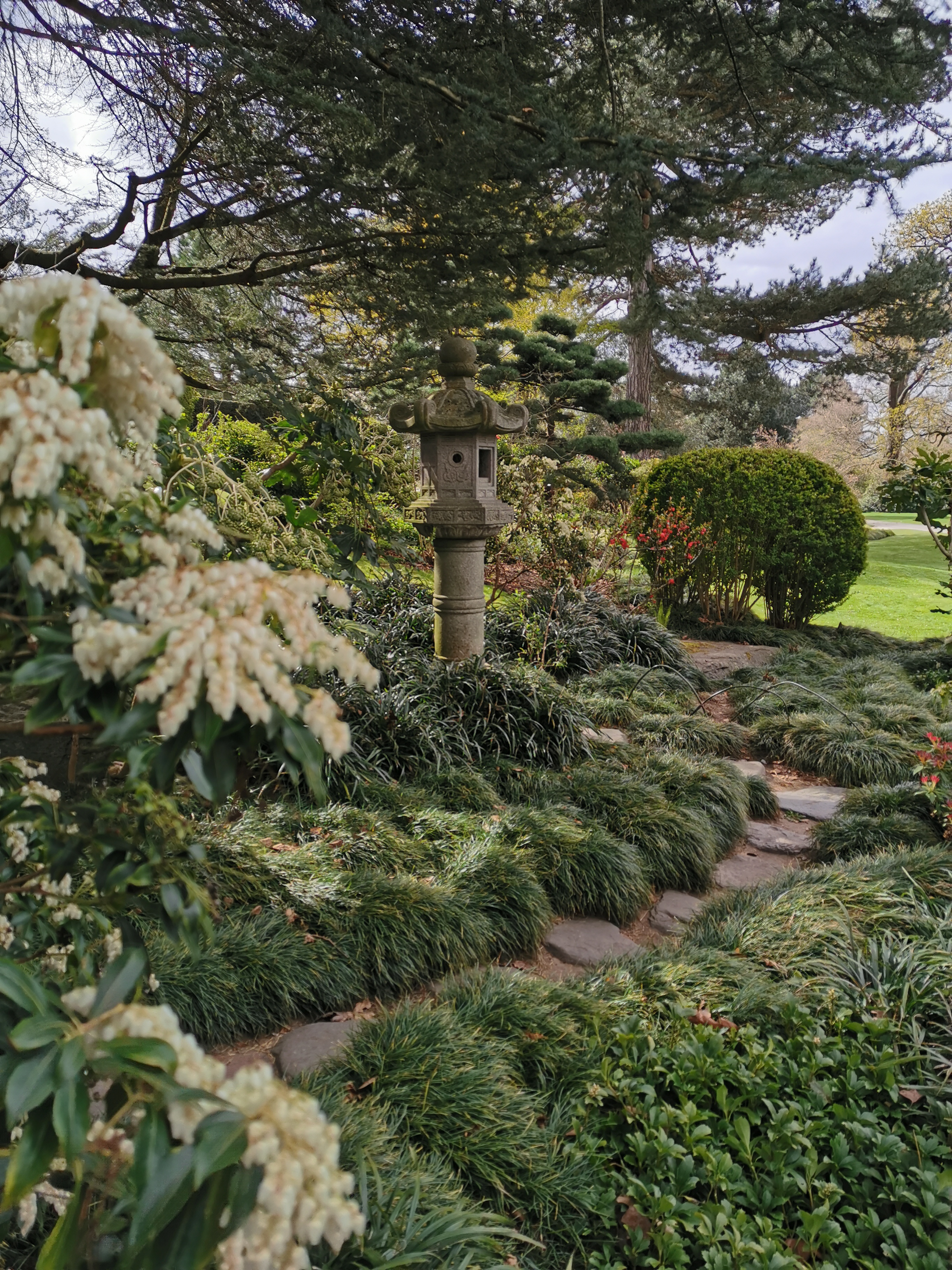
Visited by less than 1% of overseas tourists (0.8% to be exact), Mie Prefecture lies on the eastern side of the Kii Peninsula and is steeped deeply in Japan’s mythology and legends.
Easily accessible from Osaka, Kyoto, Nagoya and Wakayama, Mie is a great reason to extend one’s trip through the Kinki/Kansai region and learn more intimately of Japan’s people and folklore. Abundant with lush nature, delicious seafood particularly their oysters and of course renowned throughout the world for the rare and beautiful Mikimoto akoya pearls; Mie’s Ise Shima region lies on the peninsula facing the Pacific Ocean leading to the rich diversity of sea life available.
A “ONCE IN A LIFETIME PILGRIMAGE” TO JAPAN’S MOST SACRED SHRINE

Culturally and historically, Ise Shima in particular is beloved by the Japanese people for its revered shrine Ise Jingu; the foremost Shinto shrine in all of Japan. Many will travel from all over Japan for their ‘once in a lifetime pilgrimage’ to visit Ise Jingu during the auspicious New Year period in January in order to pay their respects and thanks to the sun goddess deity Amaterasu Omikami (Ōhirume no Muchi no Kami - 大日孁貴神). One of the three children of the creator god Izanagi, it is Amaterasu whose later descendants by her grandson Ninigi became the Imperial House of Japan.
Ise Jingu is exceptionally rare not only in its history but its unique circumstances where 125 collective shrines scattered around the area, technically comprise the entire Ise Jingu complex and where every 20 years, the two main shrines Naikū (内宮) and Gekū (外宮) along with several of the lesser shrines are completely rebuilt in a process known as Shikinen Sengu using the technique of the ancient architectural style Yuitsu-shinmei-zukuri (唯一神明造). The process is long and encompassing, taking about 8 years. Currently the present buildings completed in 2013 are the 62nd iteration to date and rebuilding will start in 2025 to finish by 2033.

DISCOVERING THE ANCIENT SMOKING STYLE “TEBIYAMA” OF KATSUOBOSHI

The use of Katsuoboshi (dried bonito flakes) is inherent in everyday Japanese cooking, providing the essence and soul of the country’s famed umami flavour for thousands of years. It is also a key food offering in the ritual of Shinginkyoroku (神人共食), where one offers katsuoboshi, rice, water, salt, sake and other seasonal delicacies to Amaterasu to pay their respects and strengthen the relationship between one and the goddess.
Set by the ocean in the Nakiri district, one can visit one of the last few remaining Katsuo Ibushigoya (bonito smoking hut) in Japan to learn and experience the ancient method of Tebiyama “smoking style” used to create the delicious, potent flavour of the Katsuoboshi flakes.
The current smoking hut was built in 1946, and the Tenpaku family consider this year the modern founding year of their business “Nakiribushi” even though their recipe and technique has been passed down from generation to generation for hundreds of years. Currently the family is helmed by the fourth generation family head “yondaime” Tenpaku Yukiaki, with his daughter Kikuchi Kisa preparing to succeed as the fifth generation family head “godaime”.
Passionate and enthusiastic, both father and daughter will guide visitors through the four step 6 month process of their smoking and fermentation, explaining the importance and history of this beloved produce; whilst also allowing visitors to try their hand at shaving their own Katsuoboshi flakes.
Afterwards, guests will be invited to partake in their own Shinginkyoroku (神人共食) within the smoking hut, first drinking sake to cleanse then consuming freshly cooked rice dusted amply with Nakiribushi’s Katsuoboshi flakes.

MEETING THE FAMED FEMALE AMA DIVERS OF MIE

No visit to Mie is complete without meeting the famed female Ama divers of Mie. For thousands of years, these impressive women have free-dived to depths of 20metres or more to gather and harvest fresh shellfish and other marine food. In 2020, there were 800 Ama divers in Ise Shima’s 27 regions designated for Ama divers; today in 2025, there are roughly 500.
Though the average age of divers is 70; for many it is a way of life they have known for many of their adult days and even today they still go out every day for 1 hr in the morning and afternoon (1.5hrs in the afternoon, later in the season) to collect seafood. Free diving is essential to the way of the Ama diver, for the ability to hold one’s breath for a limited duration of time helps ensure that no over-fishing occurs.
For some, the ocean was part of them before they were even born, especially Kimoyo Hayashi. Now 70 years of age, Kimoyo became a professional Ama diver at 15 years old, even then a rarity. Her mother continued to be an Ama diver all throughout her pregnancy with Kimoyo even to the final months, so for Kimoyo the ocean is her soul. To her knowledge, she can trace her family’s history of Ama divers back at least four generations to her great-grandmother but prior to that she is unsure.
During the quieter times, one can meet Kimoyo and other Ama divers at Ama Hut SATOUMIAN, a replica of a traditional Ama hut where divers would rest by the fire, change clothes, eat, chat and drink in between the diving times. At Ama Hut SATOUMIAN, one gets to enjoy a delicious seafood smorgasbord of fresh seafood caught daily whilst chatting and listening to their stories and experiences.
If you wish to see the Ama divers in action, make time to visit Mikimoto’s Pearl Island, where in 1 hour intervals from 9.30, one can see the Ama diver live demonstration along with an information voice over.

ENJOY STUNNING VIEWS OF AGO BAY FROM YOKOYAMA OBSERVATORY

Japan’s love and celebration of beautiful natural landscapes can be found all over the country, and Mie is no exception; Ise Shima in particular boasts gorgeous views of one of its most beloved areas - Ago Bay.
Ago Bay is the birthplace of Mikimoto’s treasured Akoya pearl, the home of the Ama divers and is one of the three marine environments in the Shima peninsula. The calm, sheltered bay was originally known as "Miketsu-kuni," due to its importance as a food source for the surrounding community; it’s otherwise known as a satoumi for this very reason as it’s a coastal area where the community source their livelihood from the ocean. The bay also lies within the Ise-Shima National Park which further serves to protect its waters for the future to ensure sustainability and biodiversity.
One of the most stunning points to view Ago Bay and its many islands is at the Yokoyama Observation Deck built upon the slopes of Mount Yokoyama. Sweeping, panoramic views can be enjoyed and if the weather is clear enough in winter, one can even see Mt Fuji. Other seasons will see the cherished sakura trees in bloom, or maple trees turning a vibrant red whilst surrounding the deck are mini hiking trails that people can enjoy with other viewing decks along the way.

RELAX AFTER YOUR ADVENTURES AT TOBA INTERNATIONAL HOTEL

Overlooking Toba Bay, Toba International Hotel rests on a hill on Cape Mondo with breathtaking views of the water. A total of 84 rooms are available with mountain or panoramic ocean views, some a combination of Japanese & Western aesthetic whilst others a more modern Western aesthetic. Spacious and welcoming, the rooms offer a perfect respite after a long day travelling, with Club Lounge access complimentary depending on the type of room reserved.
Guests can also enjoy the views of Toba Bay from the outdoor terrace, relaxing on one of their many lounges or take the time to visit their sister hotel down the road Shiojitei which offers a more traditional Japanese experience. At Shijoitei, guests of Toba International Hotel can also enjoy the healing and relaxing nature of the onsen facilities as well as its famed outdoor pearl bath (not onsen water) which was developed by Mikimoto Cosmetics of the Mikimoto Group. Known as the Pearl Aurora bath, bathing within, allows one to enjoy the benefits of elements such as pearl conchiolin, pure pearl minerals and pearl collagen which will gently make your skin moist, soft and shimmer with the lustre of pearls.

Follow Lia as she explores more areas of Japan intimately, over on her IG @ryokanwanderings or have a read of her blog: Ryokan Wanderings for even more stories and adventures.
 |
Lia is an Aussie based in Tokyo, Japan with a passion for exploring the lesser known, and learning people’s life stories. She loves to seek out ryokan traditional accomodation with private onsen hot spring baths (which she shares on Ryokan Wanderings), discovering hidden sushi omakase gems or curled up in her Totoro bed with a good book. If not travelling in Japan or abroad, her days are spent in her studio, Tokyo Kaleidoscope, reconstructing vintage Japanese silk kimonos into bespoke pieces for herself and others. |

















































